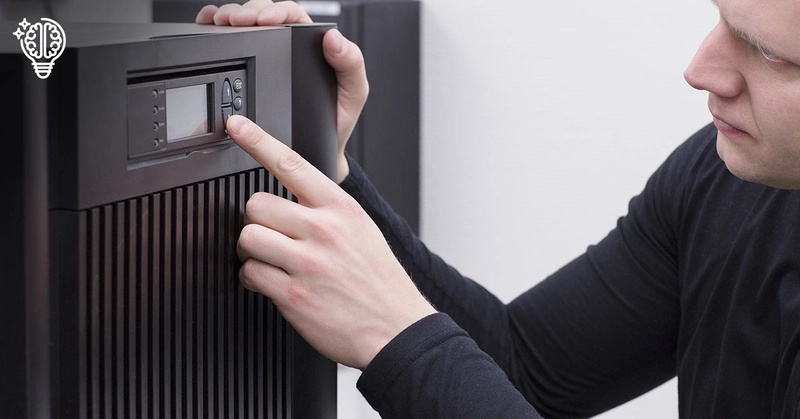
Choosing the right UPS for your home or office will help you minimise the risk of data loss and protect the integrity of your applications and systems when the power goes out unexpectedly.
Uninterruptible power supplies (UPS) keep delivering power to your devices during an electricity outage, and ensure that the juice reaching your gear isn't subject to the variations that sometimes come from the grid.
We're going to focus on choosing a UPS for your home office in this project, but the same principles apply to any environment where you want to keep something running when mains power lets you down. The goal is not to let you continue working indefinitely but to let you shut things down in an orderly way or to keep essential equipment running.
What is a UPS?
A UPS stores power in a battery so it can be used by connected devices in the event that mains power is interrupted or isn't delivered within the expected voltage, frequency and other technical parameters. You connect your essential devices to the UPS and they receive power from the battery even when mains power is offline.
How to choose a UPS
Step 1
Make a list of the devices that need to keep running if the power goes out. That might be a key server that holds important files everyone needs, the router that allows people to connect to each other and network-attached storage devices that should be shut down correctly to avoid data loss.
Step 2
Look at the power supply for each device you plan to connect to the UPS. A number of specifications will be listed but the key ones you need are the amps, volts and watts. For each device on your list, record the wattage, voltage and amperage requirements.
Step 3
Multiply the volts and amps to calculate each device's VA rating. For example, a router that requires 12VDC and 3A requires a UPS that can handle 36VA. Do this for each device you want to connect to the UPS.
Step 4
At the bottom of the list, add the total VA requirement for all the devices and add the total W needed. Your table should look like this example.
Device | Volts (V) | Amps (A) | VA (V*A) | Watts (W) |
|---|---|---|---|---|
Router | 12VDC | 3 | 36 | 36 |
Server | 240VAC | 3.75 | 900 | 700 |
Laptop | 20VDC | 3.25 | 65 | 65 |
Total |
|
| 1001 | 801 |
Step 5
The capacity of a UPS is usually given in Volt Amps (VA) or Watts (W). As you'd expect, higher values correlate to greater battery capacity. For example, a UPS rated at 650VA/390W will deliver less power than a UPS rated at 1500VA/900W. Extra capacity will either allow you to run more devices or a smaller number of devices for a longer period of time.
In order to power the three devices on the list, we would need the UPS rated at 1500VA/900W. That would allow you to run things long enough to close down the server correctly so nothing untoward happens.
With Energy Networks Australia reporting that the average user experiences a little over three hours of power outages a year, ensuring your systems are protected is crucial. Knowing how to choose the right UPS for your situation is an important step in protecting your information and the integrity of your systems.



